Imagine wandering through the Australian Outback, the sun blazing overhead, red dust swirling around your boots. Suddenly, out of the corner of your eye, you spot a creature that looks more like a miniature dragon than anything earthly—a lizard bristling with spikes, moving in slow, deliberate jerks. This is the thorny devil, a tiny survivor with a toolkit so bizarre and brilliant, it almost seems like a myth. But make no mistake: this spiky little reptile is as real as the sand it calls home, and its life is a masterclass in desert survival, wonder, and adaptation.
The Mysterious World of the Thorny Devil
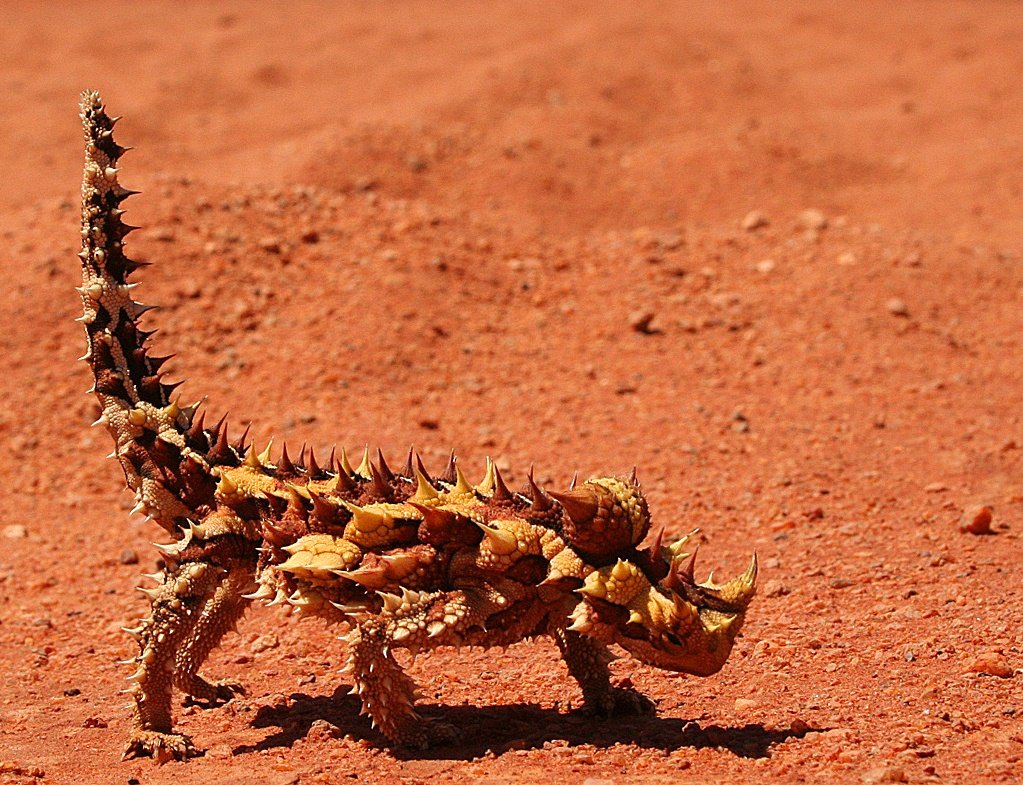
The thorny devil, also known as Moloch horridus, is a lizard that seems to have walked straight out of a fantasy novel. Covered from head to tail in sharp, intimidating spikes, it’s easy to see why this animal is often called the “thorny dragon.” Despite its fierce appearance, the thorny devil is harmless to humans and spends its days quietly navigating the harsh landscapes of central and western Australia. Its unique look isn’t just for show—it’s a survival toolkit designed to confuse predators and thrive where other animals would perish. When you see one in the wild, it’s like spotting a living fossil, a relic of ancient times that’s still holding its own against the world’s harshest elements.
Built for Survival: The Devil’s Armor
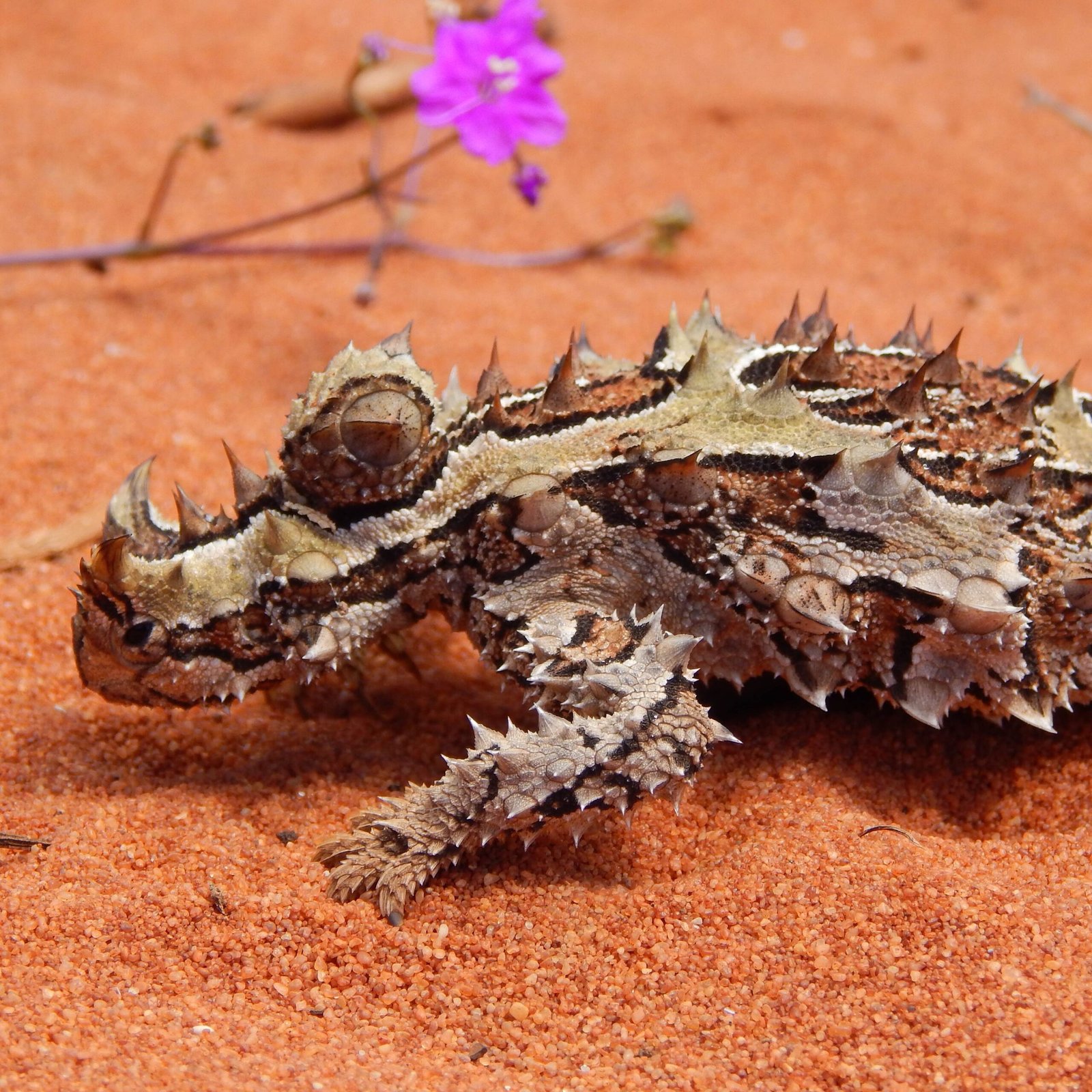
Every inch of the thorny devil’s body is covered in conical spikes, making it look almost untouchable. These spikes are more than just impressive decorations—they serve as a powerful deterrent against predators, making the lizard a tough mouthful for hungry birds or snakes. Beyond protection, the armor also helps with temperature regulation, catching the morning dew and guiding it down toward the lizard’s mouth. It’s as if this little reptile is wearing a suit of armor that not only keeps it safe but helps it drink in the middle of an endless desert. The spikes and grooves are a marvel of evolution, a testament to the creativity of nature.
Astonishing Water Collection: Drinking With Its Feet
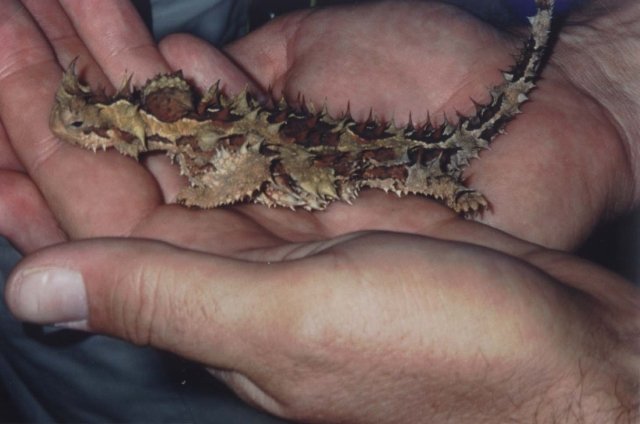
Perhaps the most astonishing trick up the thorny devil’s sleeve is its ability to “drink” using its feet. In the dry deserts of Australia, rainfall is rare, but the mornings bring dewdrops and occasional puddles. The lizard’s skin is covered in tiny channels that act like miniature aqueducts. When the thorny devil steps into moisture, water is drawn up through these grooves and transported—by capillary action—straight to its mouth. It’s like having a built-in straw that lets it sip water from the ground without ever lowering its head. This remarkable adaptation allows the thorny devil to survive in places where other animals would quickly die of thirst.
Camouflage: Living Like a Desert Ghost
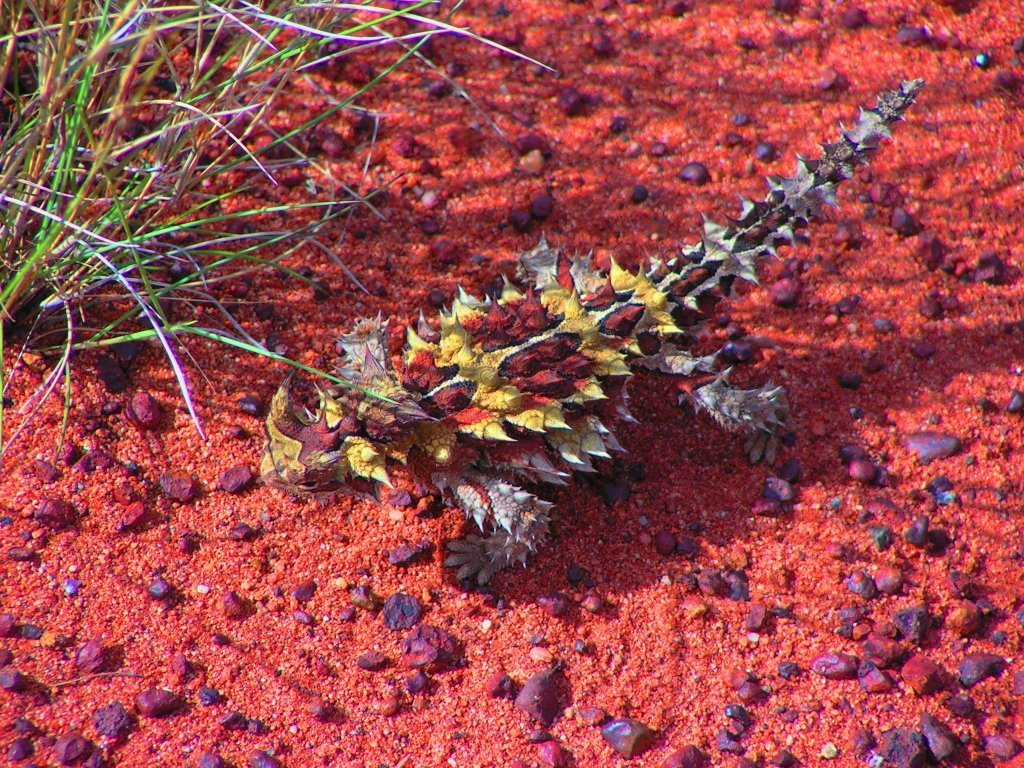
Despite its fierce appearance, the thorny devil is a master of disappearing in plain sight. Its colors—ranging from sandy yellows to rusty reds—blend seamlessly into the arid landscape. When threatened, it freezes, relying on its coloration and spiky silhouette to break up its outline. It’s almost as if the lizard becomes a ghost, vanishing into the desert’s shifting shadows. This camouflage is crucial for avoiding predators, especially when the lizard is basking in the open to warm up after a cold desert night. Watching a thorny devil blend into its surroundings is like witnessing a magic trick, a reminder of nature’s subtle genius.
The Art of Deception: The “False Head” Defense
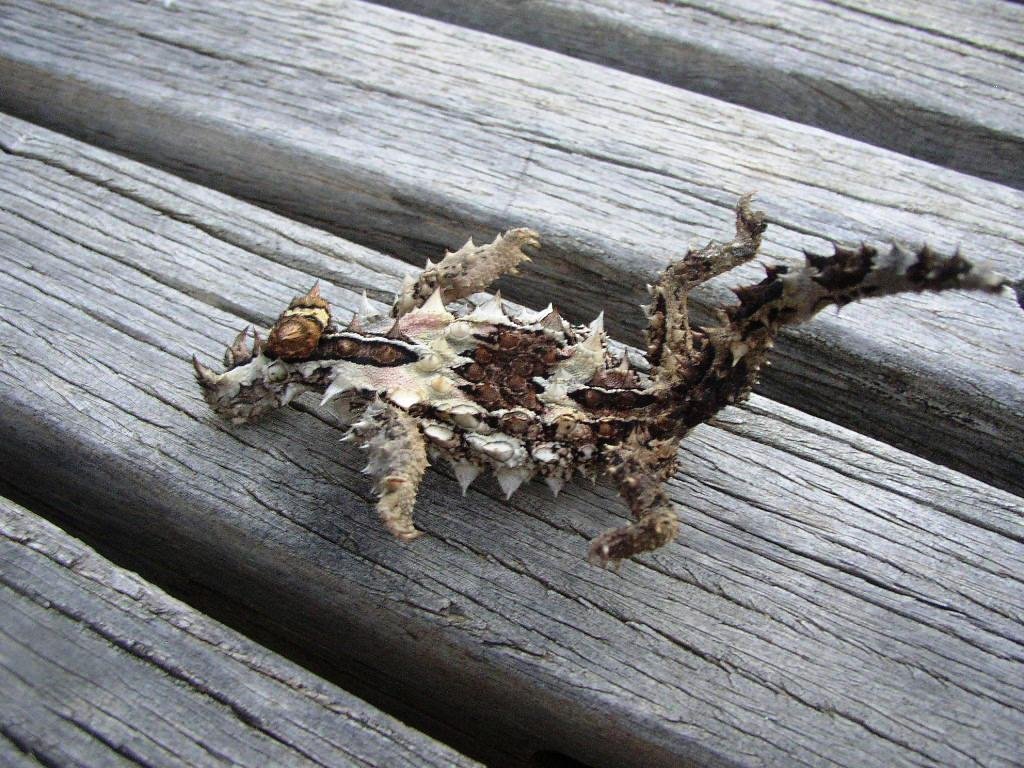
The thorny devil has another defense that’s as quirky as it is clever—a “false head” on the back of its neck. When danger looms, the lizard tucks its real head down and presents this false head to would-be attackers. This confuses predators, often leading them to strike at the wrong end, giving the lizard a precious second to escape. It’s an extraordinary adaptation that shows just how far evolution will go to keep a species alive. This little lizard’s ability to outwit its enemies is part of what makes it such a mysterious and captivating creature.
A Diet of Ants: The Ultimate Specialist

While some animals are picky eaters, the thorny devil takes specialization to a whole new level. Its entire diet consists almost exclusively of ants—sometimes thousands in a single meal. With a sticky, fast-moving tongue, the lizard laps up ants as they march along the ground, often sitting patiently beside an ant trail for hours. This dietary dedication means the thorny devil has little competition for food, but it also means it must constantly search for new ant colonies to keep itself fed. Watching a thorny devil eat is a lesson in patience, persistence, and the importance of finding your niche in the world.
Surviving the Swings: Temperature and Weather Adaptations
Desert life isn’t just about finding food and water—it’s about surviving brutal extremes. The thorny devil is a champion at handling wild swings in temperature, from freezing nights to scorching afternoons. During the hottest part of the day, it burrows into the cool sand or hides beneath shrubs to avoid overheating. When temperatures drop, it emerges to bask in the sun, stretching out to absorb as much warmth as possible. Its body is designed to minimize water loss, with scales that reduce evaporation and slow, deliberate movements that conserve energy. It’s a master class in desert living, a daily dance with the harshest climate on Earth.
The Long, Winding Walk: A Peculiar Gait
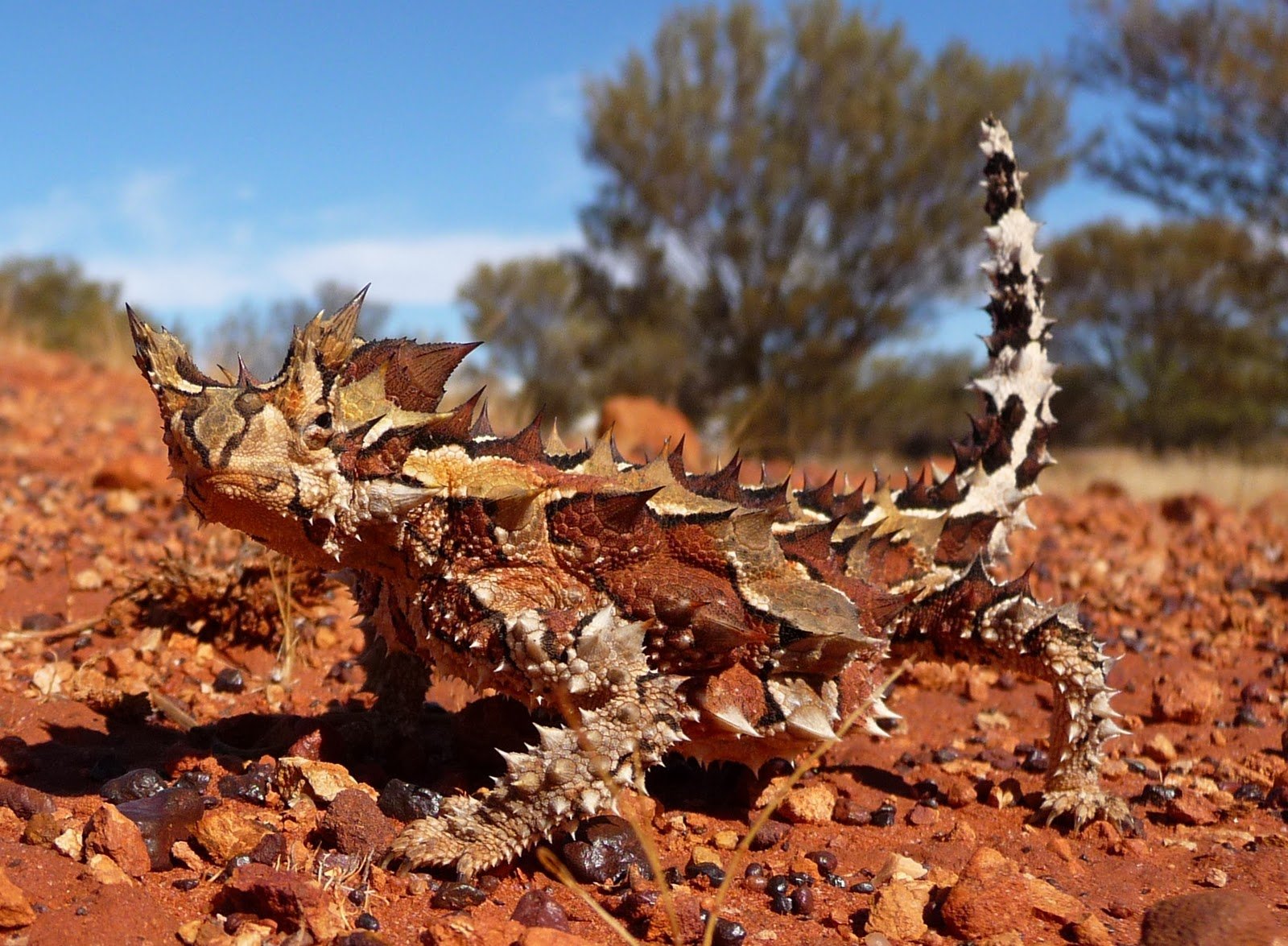
If you ever get the chance to watch a thorny devil moving across the sand, you’ll notice a strange, jerky walk. The lizard sways from side to side, lifting its tail high and pausing frequently. This odd gait isn’t random—scientists believe it helps confuse predators by making the lizard’s movement hard to predict. It may also reduce the animal’s exposure to the burning ground. The result is a walk that seems almost robotic, a living wind-up toy inching its way through an endless desert stage. It’s one more quirk that sets the thorny devil apart from every other creature you’ll ever meet.
Reproduction: Mysterious Mating and Hidden Nests
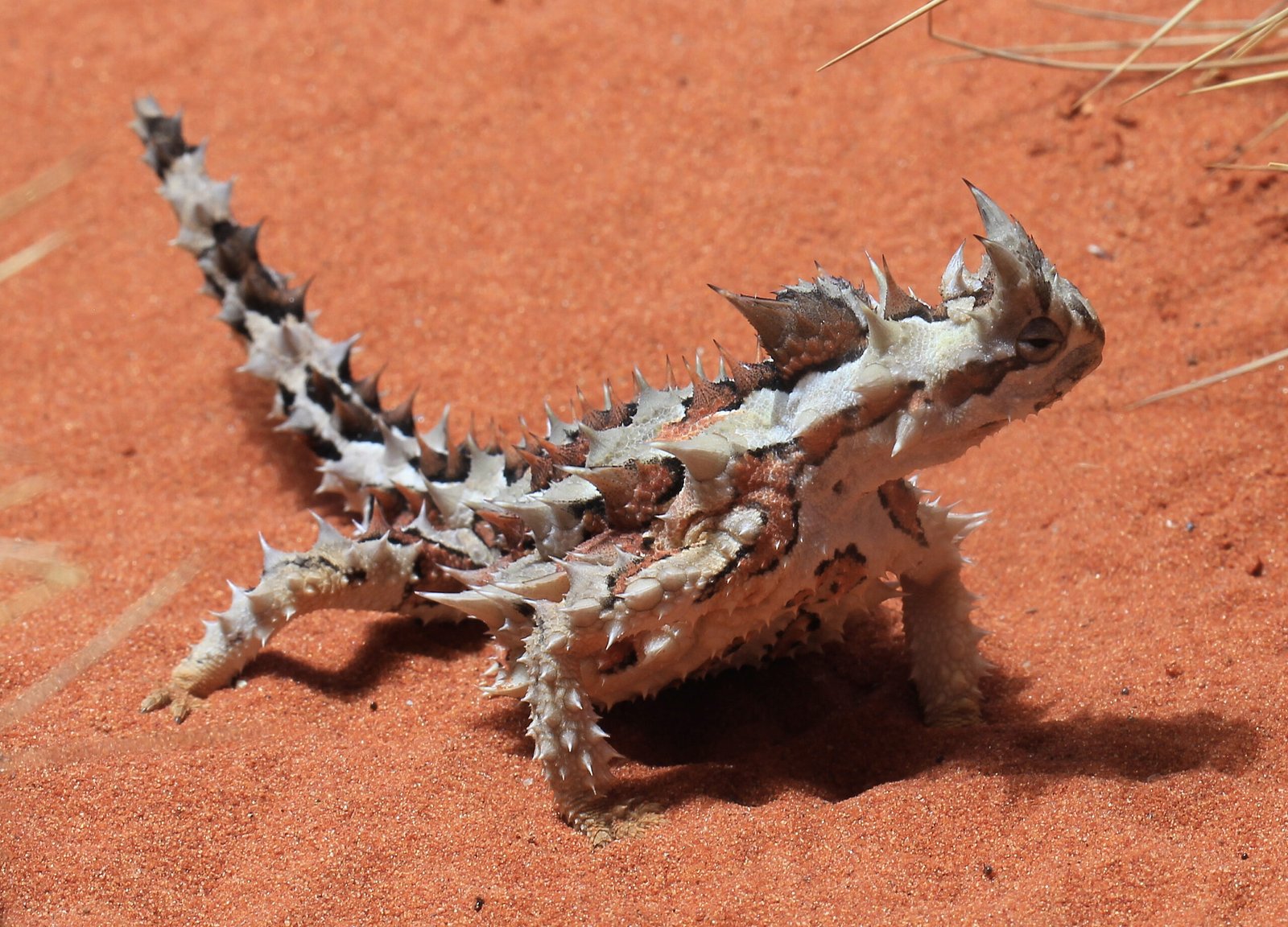
The thorny devil’s approach to reproduction is as secretive as the rest of its life. Each spring, females lay a clutch of eggs in burrows they dig deep into the sand, where temperatures remain stable and predators are less likely to find them. The eggs incubate for several months before hatching, and the tiny, spiky babies are on their own from the start. There’s no parental care—each youngster must immediately begin the tough life of a desert survivor. The fragility of these eggs, hidden away in the vast wilderness, speaks to the delicate balance that sustains this species.
Predators and Threats: Facing the Dangers of the Outback
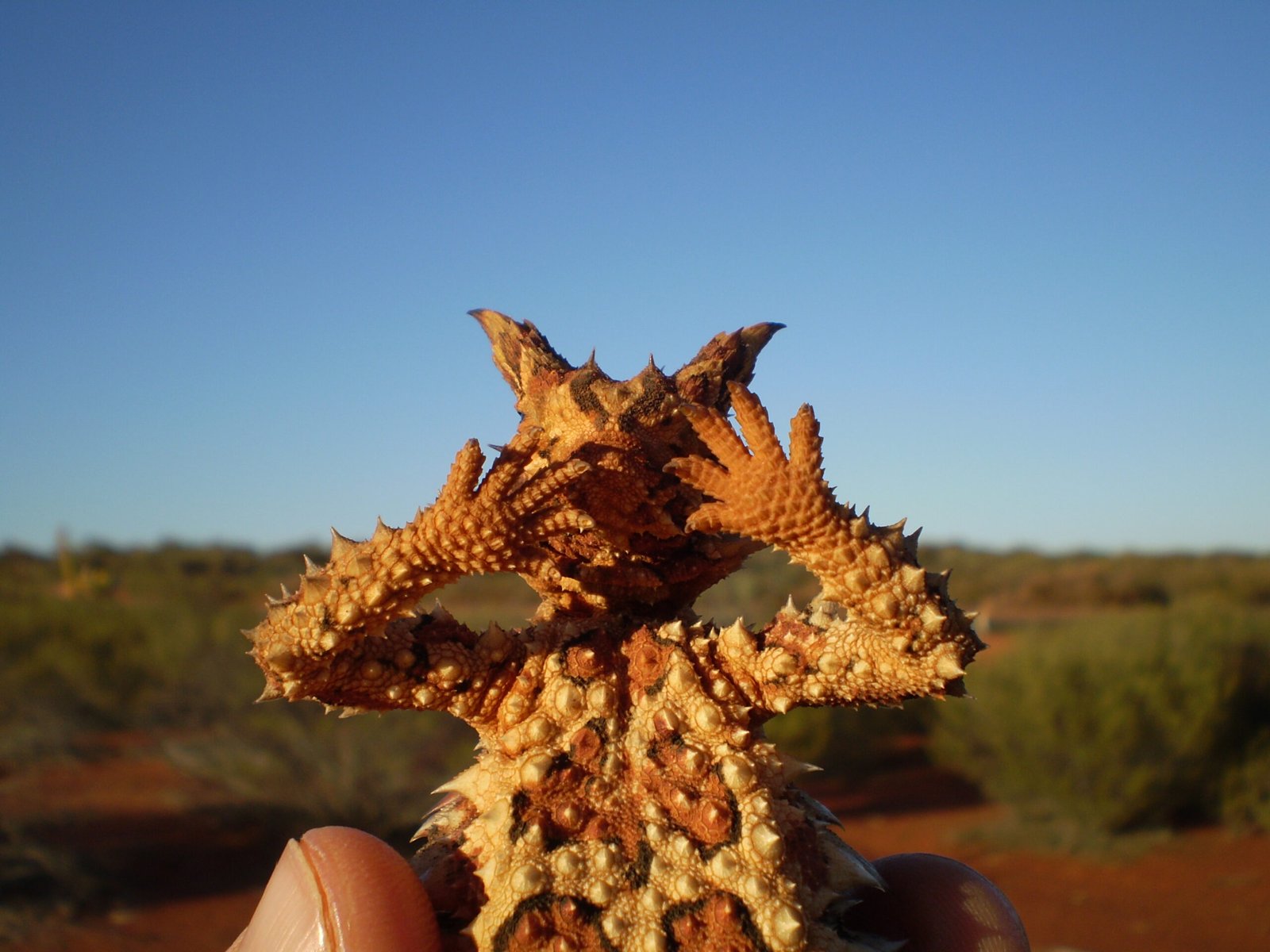
Despite its impressive defenses, the thorny devil isn’t completely safe. Birds of prey, such as hawks and falcons, are always on the lookout for a meal. Snakes and larger lizards may also take a chance. Habitat loss and climate change are growing threats, as the delicate balance of the desert ecosystem is increasingly disrupted by human activity. Even so, the thorny devil’s blend of armor, camouflage, and cunning has allowed it to persist where many others cannot. Its continued survival depends on the health of the wild places it calls home.
The Role of the Thorny Devil in Indigenous Culture
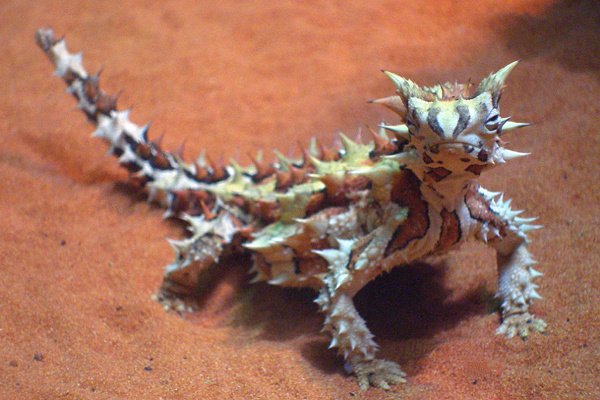
For thousands of years, Aboriginal Australians have lived alongside the thorny devil, recognizing its importance in the desert landscape. Some Indigenous groups see the lizard as a symbol of resilience, adaptability, and survival. Stories and legends about the thorny devil are woven into Dreamtime mythology, where the creature often appears as a guardian of hidden water sources or a spirit of the earth. This deep connection to the land and its creatures is part of what makes the thorny devil not just a scientific marvel, but a cultural icon as well.
Scientific Discovery: The Fascination Continues
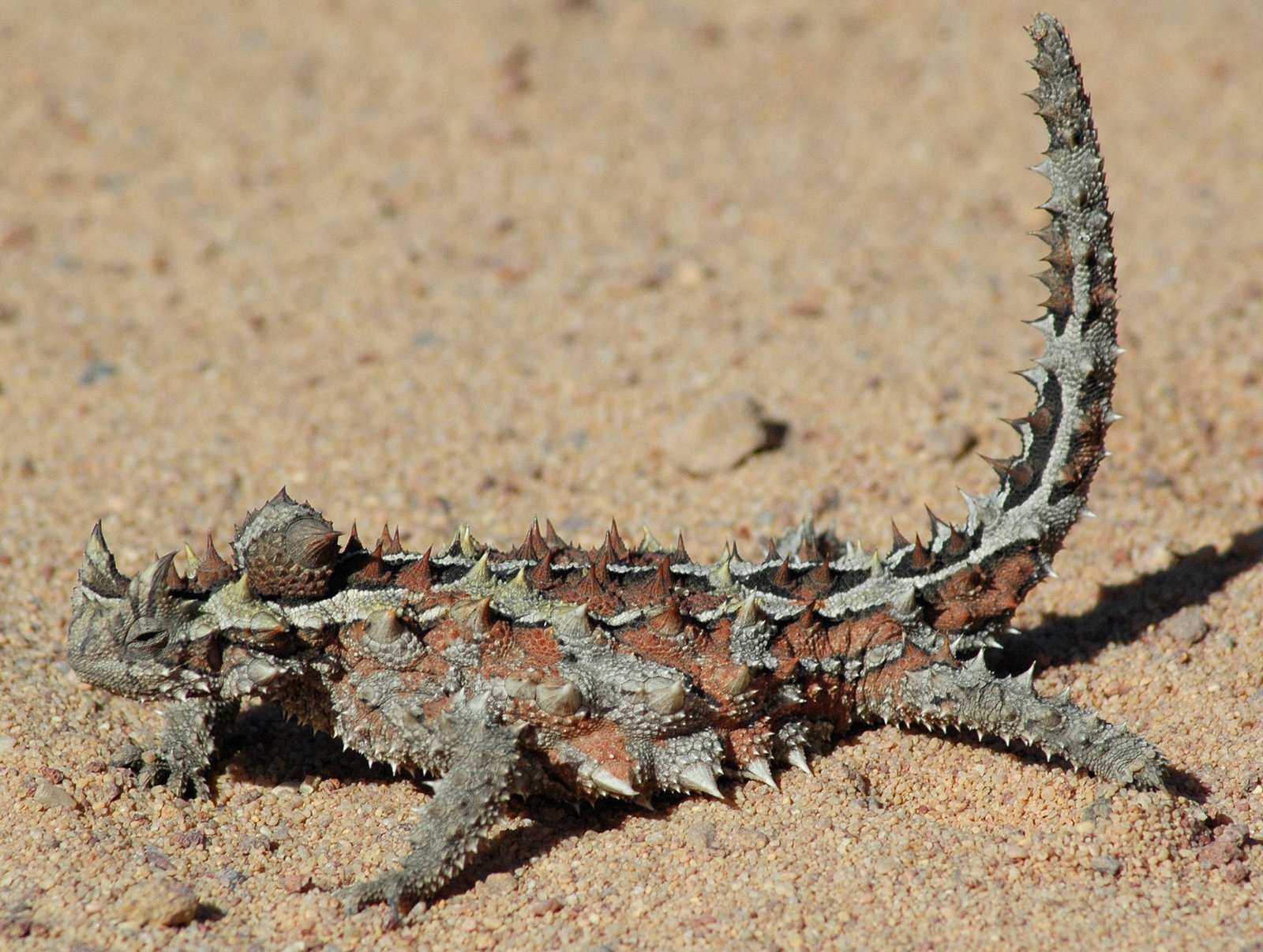
Ever since European explorers first encountered the thorny devil in the 19th century, scientists have been captivated by its strange biology. Today, researchers continue to study its water collection abilities, camouflage, and unique diet, hoping to unlock secrets that might inspire new technologies or conservation strategies. The thorny devil has even inspired biomimicry—where engineers design materials and structures based on natural models. Who would have guessed that a humble desert lizard could shape the future of science and engineering?
Conservation Status: A Delicate Balance
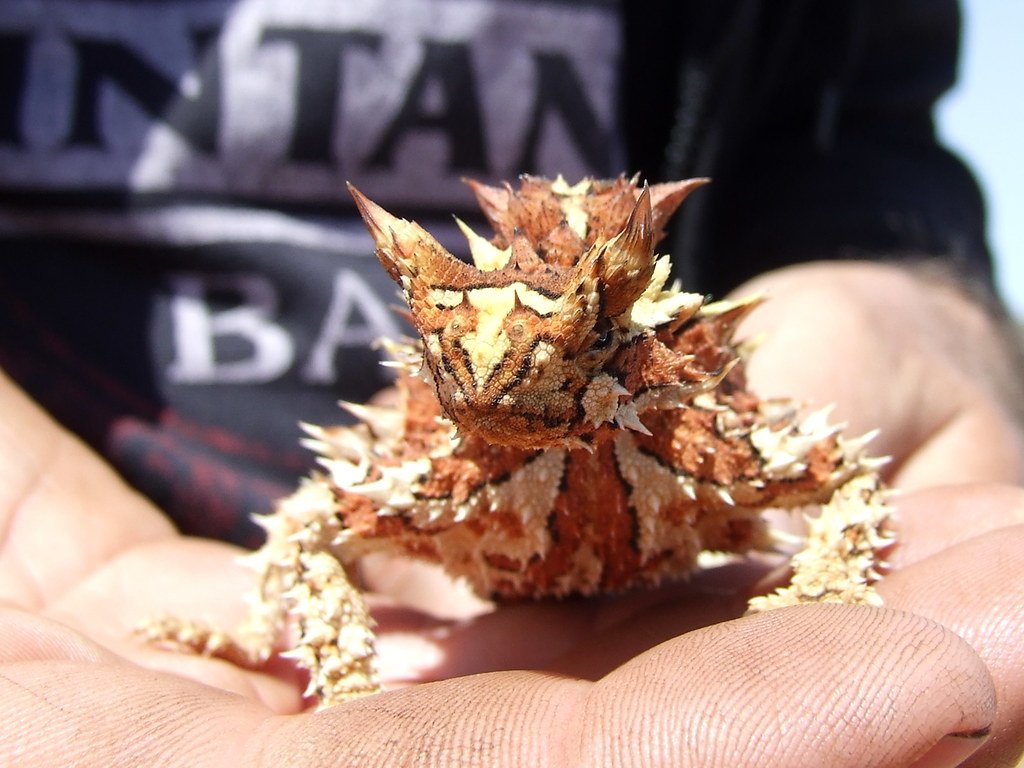
Currently, the thorny devil is not considered endangered, but its future isn’t guaranteed. Changes to its habitat—caused by development, mining, and invasive species—pose real risks. Conservationists are working to protect the vast, wild spaces the lizard needs to thrive. Education and awareness are key to ensuring that this remarkable creature continues to roam the deserts for generations to come. It’s a reminder that even the most resilient animals need our help in a rapidly changing world.
Thorny Devils in Captivity: A Rare Sight
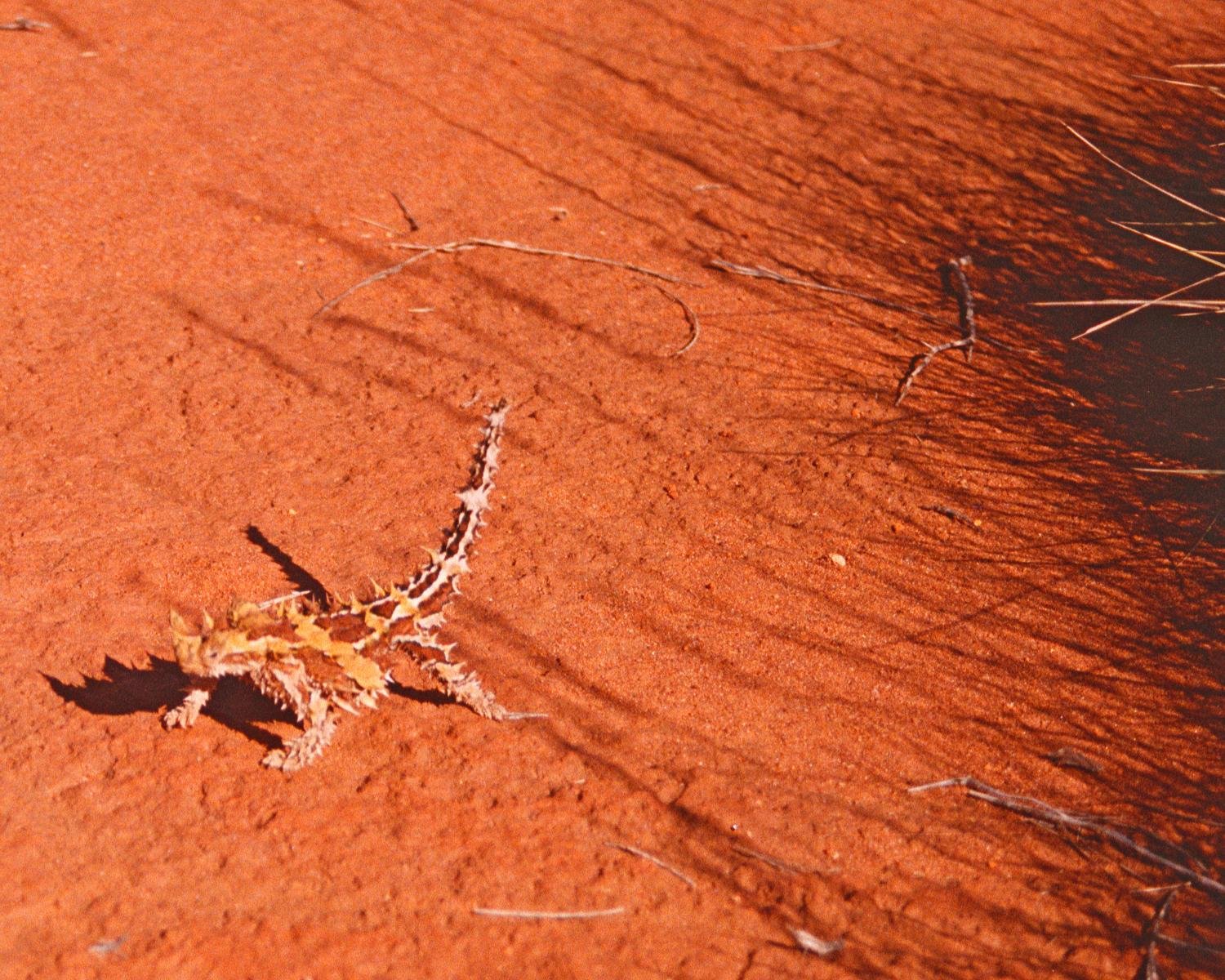
Unlike many reptiles, thorny devils rarely thrive in captivity. Their highly specialized diet of live ants makes them difficult to care for outside their natural environment. Zoos that succeed in keeping thorny devils must go to great lengths to replicate the conditions of the Australian Outback, including sourcing the right ants and maintaining exacting temperatures. For most people, seeing a thorny devil means venturing into the wild—a rare and unforgettable experience that few are lucky enough to witness firsthand.
A Symbol of the Australian Desert
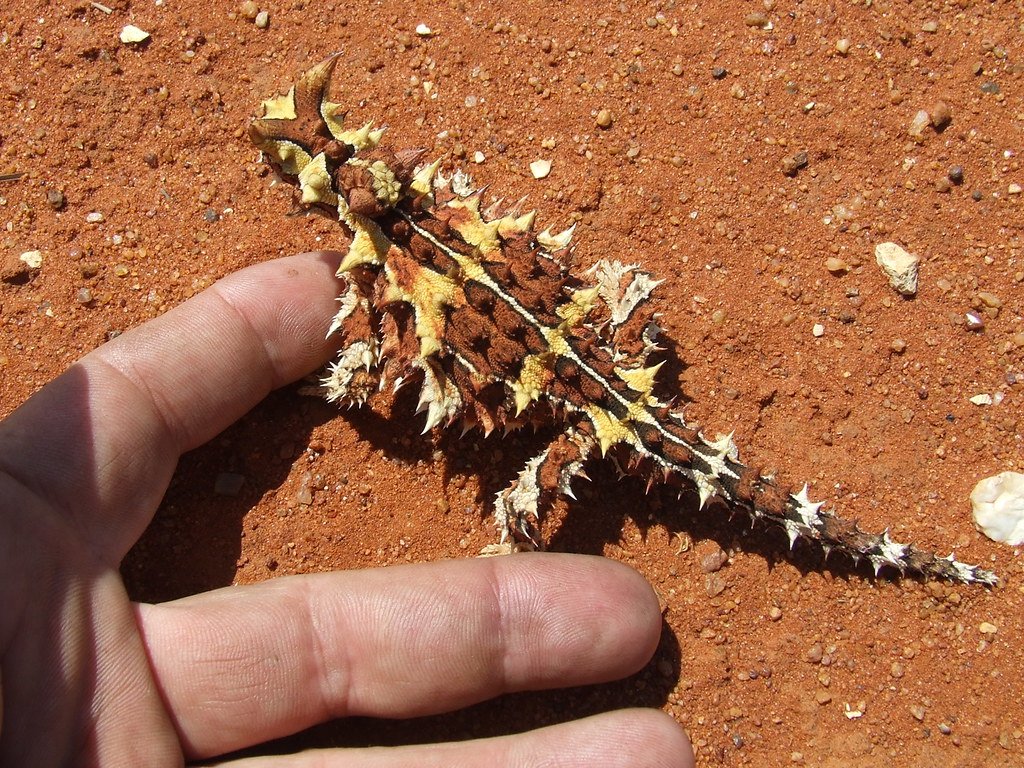
In Australia, the thorny devil is more than just another lizard—it’s a symbol of the Outback’s wild heart and untamable spirit. Tourists and locals alike marvel at its resilience and the almost mythical aura it carries. It graces stamps, artwork, and even inspires local legends. The sight of a thorny devil crossing the red sand is a reminder of just how strange and wonderful the natural world can be, and how much we still have to learn from it.
Adaptations That Inspire: Lessons From the Thorny Devil
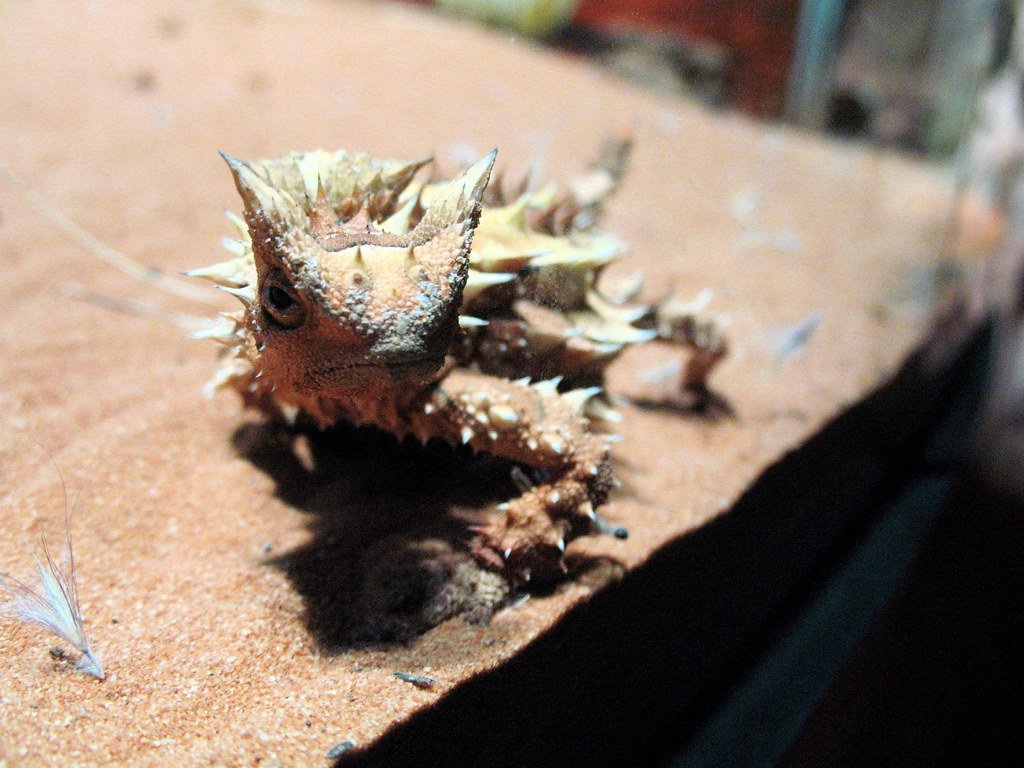
The thorny devil’s survival strategies—collecting water from its feet, blending into the landscape, thriving on a single food source—are lessons in adaptation and ingenuity. Scientists studying this lizard are uncovering new ways to address global challenges, from water scarcity to climate resilience. The lizard’s ability to make the most of its harsh environment is a metaphor for human perseverance in the face of adversity. Sometimes, the smallest creatures hold the biggest secrets.
Personal Encounters: A Glimpse Into the Devil’s World
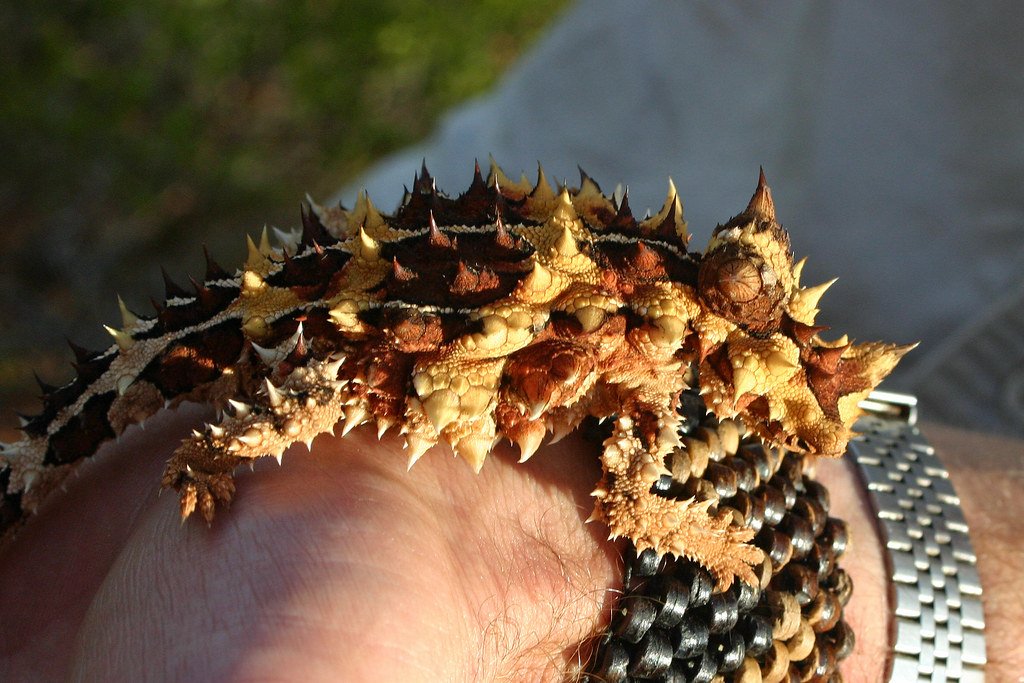
Anyone lucky enough to encounter a thorny devil in the wild will never forget it. The lizard’s slow, deliberate movements and otherworldly appearance make it seem almost enchanted. I remember the first time I spotted one: it was early morning, the sand still cool beneath my feet, and the little lizard was soaking up the sun, utterly unbothered by my presence. That moment felt like stumbling onto another planet—a fleeting connection with a creature that has mastered a world few dare to enter.
Why the Thorny Devil Matters
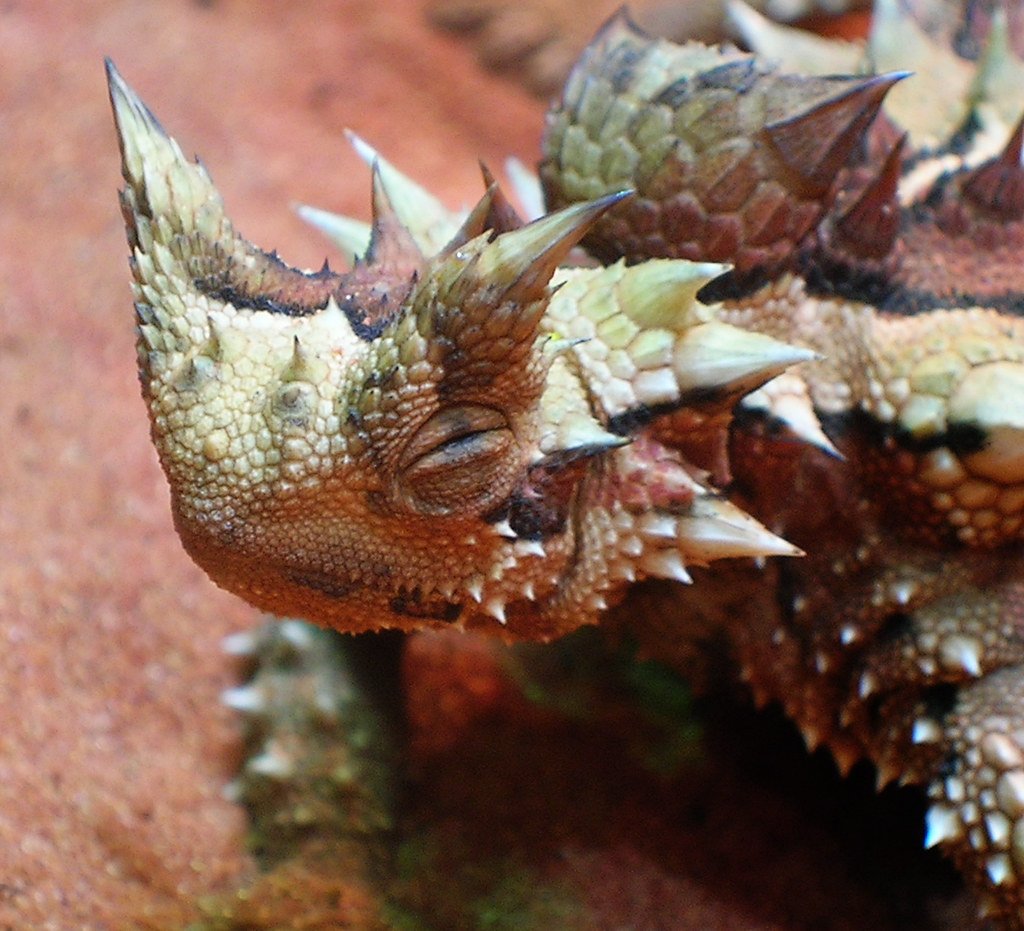
The thorny devil’s story is a powerful reminder of the resilience and beauty found in even the harshest corners of our planet. Its existence challenges us to look closer at the creatures we might otherwise overlook and to recognize the intricate web of life that binds us all together. The lizard’s ability to survive and thrive in the face of adversity is both humbling and inspiring. What other secrets might we discover if we pay attention to the quiet wonders of the world?




